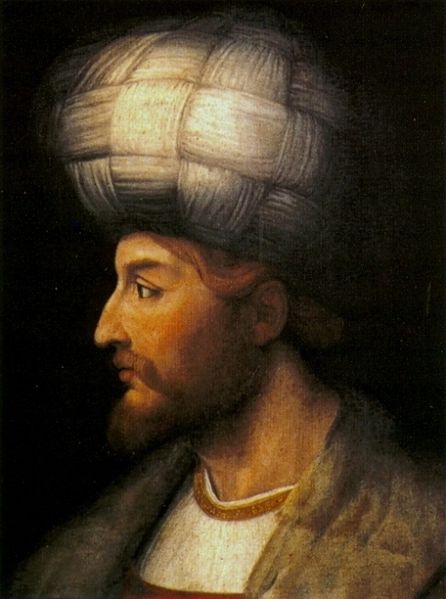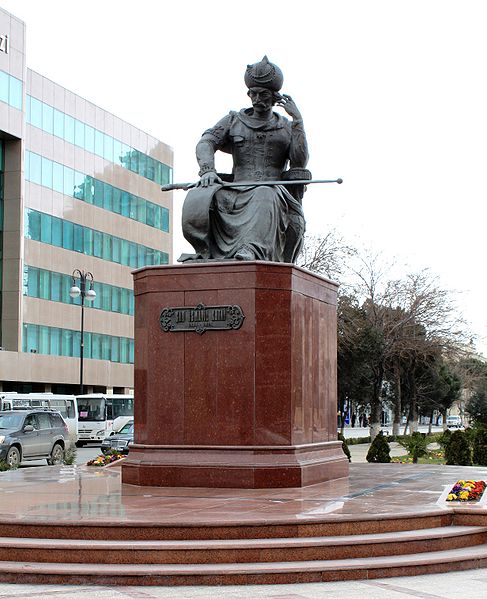<Back to Index>
- Chemist Sir Frederick Augustus Abel, 1827
- Painter Jean Baptiste Camille Corot, 1796
- Shahanshah of Persia Shah Ismail I, 1487


Shāh Ismā'il Abu'l-Mozaffar bin Sheikh Haydar bin Sheikh Junayd Safawī (July 17, 1487 - May 23, 1524), was a Shah of Iran and the founder of the Safavid Empire, which survived until 1736. Shah Ismail started his campaign in Azerbaijan in 1502, and had re-unified all of Iran by 1509. He was a Shia Muslim from Ardabil in Northwestern Iran and reigned as Shāh Ismā'il I of Irān from 1502 to 1524. He is revered as a spiritual guide in Alevism, as well as playing a key role in the rise of the Twelver branch of Shia Islam over the formerly dominant Ismaili. Ismail also, is the man who converted Iran from the Sunnī to the Shīʿī sect of Islām. Shah Ismail was also a prolific poet who, under the pen name Khatā'ī, contributed greatly to the literary development of the Azerbaijani language. Shah Ismail's family was of mixed ancestry (Kurdish, Azerbaijani, Georgian, Greek). The language used by Shah Ismail is not identical with that of his "race" or "nationality" and he was bilingual at birth. He was a descendant of the Sufi saint Safi-ad-din Ardabili (1252 - 1334). As such, Ismā'il was the last in line of hereditary Grand Masters of
the Safaviyeh Sufi order, prior to his ascent to a ruling dynasty. As a
boy only a year old, he had lost his father Haydar Safavi Sultan, Sufi Grand Master and leader of a swelling Qizilbash Shi'i community in the Azerbaijan region of Iran who was killed in battle. Ismā'il's mother was an Aq Qoyunlu noble, Martha, the daughter of Uzun Hasan by his Pontic Greek wife Theodora, better known as Despina Hatun. Theodora was the daughter of Emperor John IV of Trebizond whom Uzun Hassan married in a deal to protect Trebizond from Ottomans. As legend has it, infant Ismā'il went into hiding for several years. With his followers, he finally returned to Tabriz,
vowing to make Shi'i Islam the official religion of Iran. Ismā'il found
significant support among the people of Azerbaijan as well as some
parts of the Ottoman Empire, mainly in eastern Anatolia. Ismail's advent to power was due to Turkoman tribes of Anatolia and Azerbaijan, who formed the most important part of the Qizilbash movement. Centuries of Sunni rule followed by non-Muslim Mongol hegemony lent fertile ground for new teachings. In 1501, Ismā'il I proclaimed himself Shah, choosing Tabriz, in Iran's northernmost province of Azerbaijan, as his capital. In that year he also defeated the Aq Qoyunlu (White Sheep Turks). When the Safavids came to power in 1501, Shah Ismail was 14 or 15 years old, and by 1510 Ismail had conquered the whole of Iran. In 1510 Ismā'il I moved against the Sunni Uzbeg tribe. In battle near the city of Merv, some 17,000 Qizilbash warriors ambushed and defeated a superior Uzbek force numbering 28,000. The Uzbek ruler, Muhammad Shaybani, was caught and killed trying to escape the battle and the shah had his skull made into a jeweled drinking goblet. In 1514, Selim I, the Sunni Sultan of the Ottoman Empire,
attacked Ismā'il's kingdom to stop the spread of Shiism into Ottoman
dominions. Selim and Ismā'il had been exchanging a series of
belligerent letters prior to the attack. Selim I defeated Ismā'il at the battle of Chaldiran in 1514. Ismā'il's
army was more mobile and their soldiers were better prepared but the
Ottomans prevailed due in large part to their efficient modern army,
and possession of artillery, black powder and muskets. Ismā'il was
wounded and almost captured in battle. Selim I entered the Iranian
capital in triumph on September 7, but did not linger, a mutiny among
his troops forcing him to withdraw. This saved Ismā'il, and allowed him
to recover. Sultan Selim I also took Ismā'il's favorite wife hostage,
demanding huge concessions for her release. Ismā'il refused to cede to
the Ottoman demands, and is said to have died of a broken heart in 23
May 1524 at the early age of thirty-six, never having seen his beloved
spouse again. Ismail was a broken man after the battle of Chaldiran as he resorted to drinking alcohol. Ismail
retired to his palace and withdrew from active participation in the
affairs of the state, leaving this to his minister, Mirza Shah-Hussayn. Ismā'il's reign was marked by enormous conquests, shaping the map of Iran up to the present day. Baghdad and the holy Shi'a shrines of Najaf and Karbala were seized from the Ottoman Turks, lost and reconquered again.
He was succeeded by his son Tahmasp I.